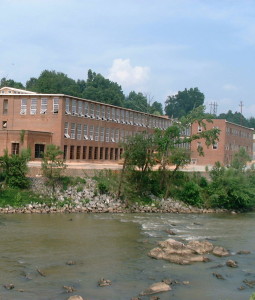
The new nation was born, and the western half of Orange County was beginning to grow the enterprises that would drive its industry for the next 200 years. But the area was not to remain Orange County. For over a decade, the citizens of the more industrial western half of Orange County petitioned the state to form a new county, and in 1849, the county was formed, with the dividing line located 9 miles west of Hillsborough. The battle near Great Alamance Creek provided the source for the name of the new county: Alamance.
The area was rich with agriculture, with hundreds of farming families working the land to produce crops and other goods for themselves and for sale to others. Many of these families owned slaves, as was common in the Southern US at the time. This would become a major issue for the county and the state a few decades later.
A second industry was transportation. Many people who came to the area followed the old Native American trading paths that lead between major towns such as Hillsborough and Greensboro. With time came industry and the development of the railroad and the need to transport goods and people en masse and the need to maintain the trains, cars, and equipment. In 1851, the first shovel of dirt for the Atlantic and North Carolina railroad was dug in Greensboro, and in 1859, the maintenance roundhouse for that railroad opened at Company Shops, located a few miles northwest of the new county’s seat in Graham.
However, the largest industry that drove the new county’s people and economy was situated along the banks of its many waterways, especially the Haw River. Throughout the county, textile and other mills sprang up, providing a source of employment for the people and a place for farmers to sell or process their crops. One of the most famous developments of this new industry came in the 1850’s with the production of Alamance Plaids, a popular fabric in the 2nd half of the 19th century.
Mills and textiles continued to provide jobs and fuel for the Alamance economy through good times and bad. The Haw River Watershed itself was home to over 65 mills in Alamance County alone, and this number does not include mills that were not built on creeks. These mills provided the lifeblood of the Alamance County economy for well over a century.
